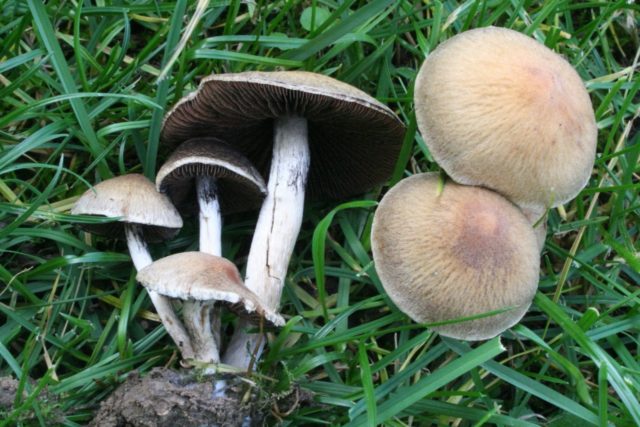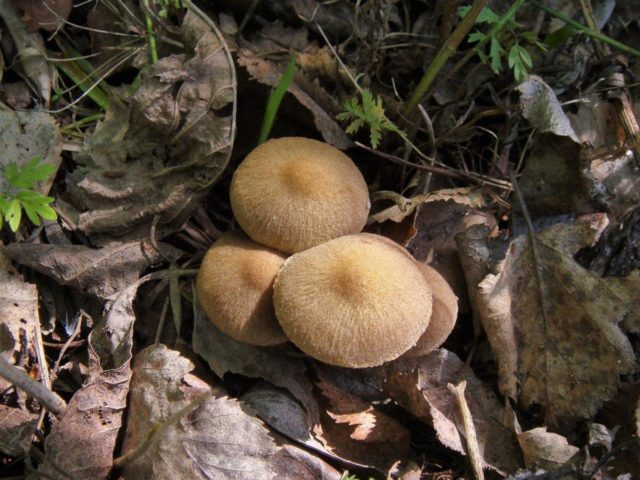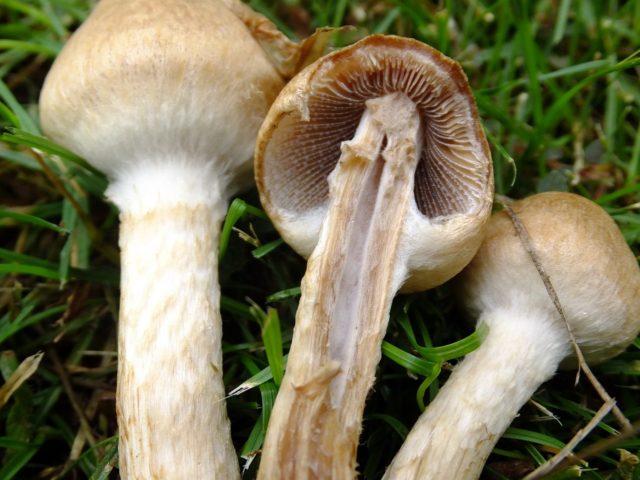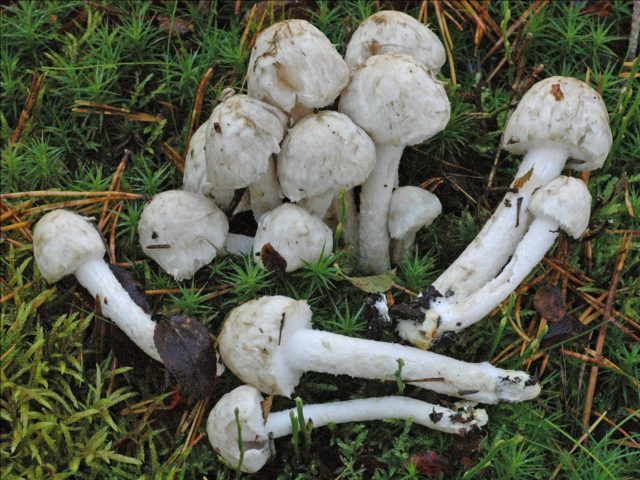Content
The lamellar mushroom psatirella velvety, in addition to the Latin names Lacrymaria velutina, Psathyrella velutina, Lacrymaria lacrimabunda, is known as velvety or felt lacrimaria. A rare species, it belongs to the latter group in terms of nutritional value. Suitable for use after boiling.
Where velvety psatirella grow
Psatirella velvety grows singly or forms small groups. In a small area of mycelium, from three to five specimens can grow. In mid-July, after precipitation, the first solitary mushrooms appear, mass fruiting in August, lasts until early September. In regions with warm climates, the last psatirella is harvested until October.
The species prefers sandy soils, grows in all types of forests, is found in open meadows, near paths, on roadsides. Found in city parks and squares, in gardens among low grass. In forest areas it happens on the remains of rotting wood, dead wood, stumps and fallen dry branches. The species is distributed from the North Caucasus to the European part, the main accumulation of psatirella is in the mixed forests of Central Russia.
What does velvety psatirella look like?
The mushroom is medium in size, the fruiting body consists of a cap and a stem.
The external characteristics of psatirella are as follows:
- The shape of the cap at the beginning of growth is rounded-convex, tightly connected to the leg with a blanket. As it ripens, the veil breaks, forming a ring on the leg and fragments in the form of a large fringe along the edge of the cap.
- In mature specimens, its shape becomes prostrate, about 8 cm in diameter with a slight bulge in the center.
- The surface is velvety, finely scaly, with radial wrinkles.
- The color is light brown or yellow-ocher with a dark spot in the central part.
- The spore-bearing layer is lamellar, extending onto the pedicle. The plates are densely arranged, well fixed to the bottom.
- The hymenophore is velvety, gray in color in young mushrooms, in adult specimens it is closer to black with light edges.
- The leg is cylindrical, thin, up to 10 cm long, widened near the mycelium.
- The structure is fibrous, hollow, light gray.
The pulp is watery, thin, brittle and light.
Is it possible to eat velvety psatirella
In the classification of mushrooms by nutritional value, felt lacrimaria is included in the last fourth category. Refers to conditionally edible species. Processing is possible only after preliminary boiling. The fruit body is watery and very fragile, not suitable for harvesting for the winter.
Taste qualities of psatirella mushroom velvety
Mushroom with a bitter taste, especially when mature. The smell is pleasant mushroom. The pulp is watery; after processing, the mushroom loses 2/3 of its mass. But it completely retains its chemical composition.
Benefits and harm to the body
The fruit body of psatirella consists of 80% water, the rest contains proteins, amino acids, a set of vitamins and trace elements. But their number is insignificant. Lacrimaria does not bring much benefit. The mushroom is not in demand among mushroom pickers. The opinion of mycologists about the usefulness of psatirella is also controversial. There are no toxic compounds in the composition, but if improperly processed, the forest product can cause a disorder of the digestive system.
False doubles
The species is referred to as a false mark, externally with a velvety psatirella, cotton psatirella is similar.
The twin is distinguished by a whiter color of the fruiting body, it is monochromatic both in the upper part and on the stem. They grow in colonies on the remains of decayed wood of different species. The color of the spore-bearing lamellar layer is light brown with a red tint. Refers to inedible species.
Collection rules
They take velvety licrimaria only in an ecologically clean place; you cannot harvest near industrial enterprises, gas stations, highways, within the city. Mushrooms can cause poisoning from substances harmful to the body accumulated in the fruit body. Overripe specimens are not harvested, their taste is bitter, and remains after processing.
Use
After collecting the lacrimaria, the felt is cleaned of debris, washed and boiled for 40 minutes. The broth is not used for cooking. The processed product is fried, boiled in soup or stewed with vegetables. Boiled mushrooms are used for salads, but they are not suitable for salting. Can be marinated with other types. Massively velvety lacrimaria is not harvested.
Conclusion
The lamellar type psatirella velvety is a mushroom with a low gastronomic value. Bitter taste, can be used for cooking only after long boiling. The species grows in mixed forests, in clearings, in city parks. It is not common; it is harvested from mid-summer to autumn.












